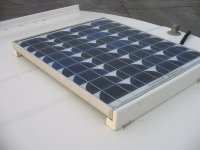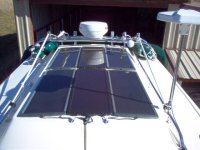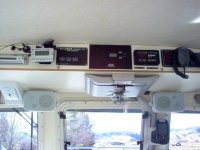On Discovery we have the Norcold refrigerator and a Weco Fridge/Freezer. They are both hooked to the port battery bank (two D34 Exide Orbital batteries). The batteries are recharged by the port motor, also by solar panels on the cabin roof. I also have a charge line from the truck to the port battery bank. When we travel with the boat, we turn on the fridge and the Waeco when we leave home, and they run 24/7 until we return. Last winter that was from Dec. 25th until the middle of March. Occasionally we have to run our Honda 2000 if there has been a few days of heavy cloud cover, while on the hook. I admit that the fridge, freezer and solar panels have added close to $2,000.00 to the cost of the TomCat, but sure make it nice for cruising. We never have to find the next place to buy ice.
We use the boat as a camper and live in it as we travel across the country-like "Wild Blue", Jim and Joan.




